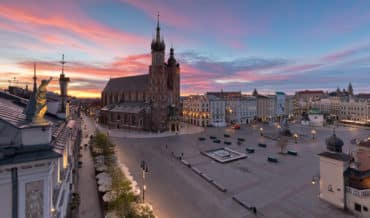The figure of God the Father is an old baroque figure from the 18th century located at the intersection of Wielicka and Powstańców Śląskich streets, formerly marking the borders of Podgórze. The sculpture is placed under a tin canopy at the top of a chapel with a multi-story pedestal. After World War II, the chapel was moved to the Old Podgórze Cemetery, where the Germans shot 10 Poles during the occupation. This event is reported on a memorial board installed later in the lower part of the chapel. The shrine belongs to the group of Krakow’s lanterns of the dead. The term “behind God the Father” became established, which meant “far beyond the city”
Suggested
Suggested contents and articles.
Suggested Contents
This cemetery was established in 1794 as a parish cemetery for citizens of city Podgórze found by Austrinas on the opposite bank of Vistula river from Krakow. It was closed in 1903. The oldest grave that remained there is from 1794 and belongs to the 15-year old Agnieszka Drelinkiewiczówna. There
- Knowledge Base, Places to visit
- March 30, 2021
A district of Krakow lying on the right bank of the Vistula. As a result of the First Partition of Poland in 1772, the Austrians took the entirety of Lesser Poland to the Vistula River, and Krakow became a border city. The area of today’s Podgórze also includes former villages
- Knowledge Base, Places to visit
- February 9, 2021
Lanterns of the Dead were intended to illuminate Krakow‘s paths in the Middle Ages. They stood mainly in front of hospitals, poorhouses, monasteries, and most of them near church cemeteries, which is why they are called lanterns of the dead. Several of them still adorn Krakow, although most of them
- Attractions
- January 21, 2021
Contents1 History1.1 Origins of Krakow Old Town1.2 Golden era1.3 Modern times2 Landmarks of Krakow Old Town2.1 Krakow Main Square2.2 Wawel Hill, Grodzka Street and All Saints’ Square3 What to do in Krakow Old Town? The area of today’s Krakow Old Town (in Polish Stare Miasto) actually mirrors the territories of the
- Attractions, Places to visit
- October 28, 2016
Comments
All comments.
Comments
